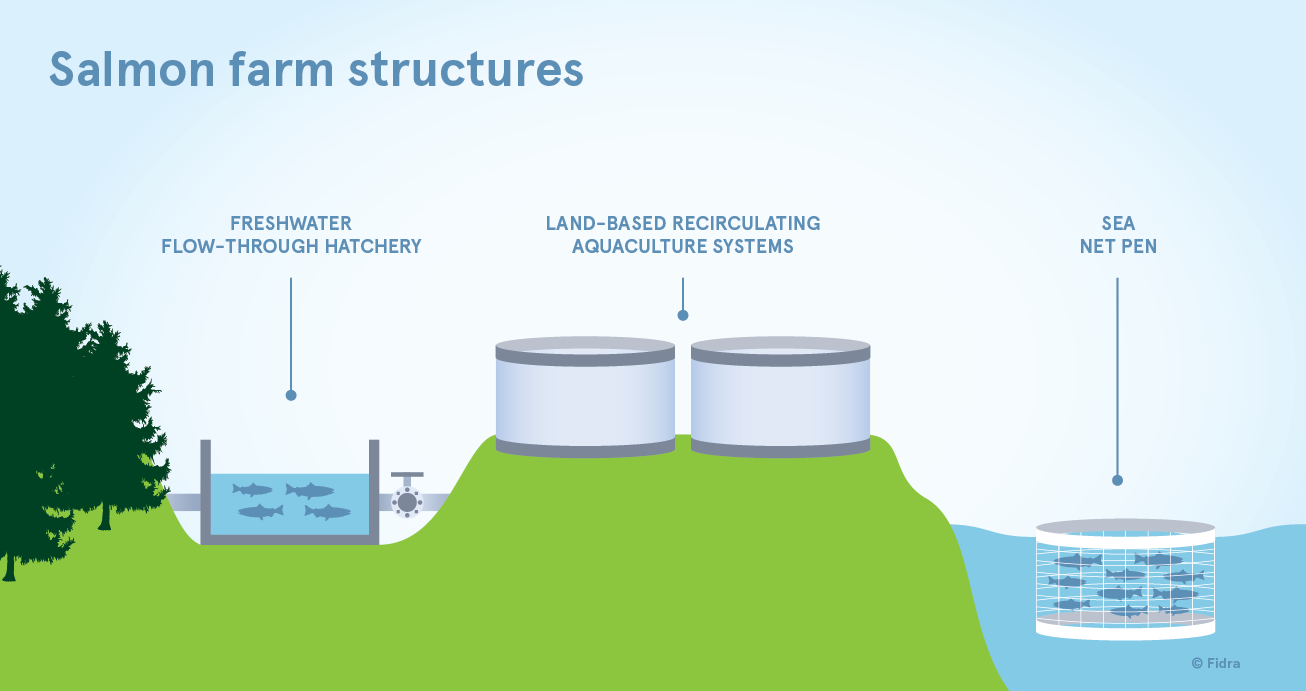Salmon Farm Structures
Atlantic salmon eggs are obtained from broodstock fish, bred on selected characteristics such as growth, disease resistance, maturation rate or colour. In Scotland, hatcheries use imported fertilised eggs to produce larval and juvenile fish. Once hatched, fry can be grown on in tanks either using freshwater flow-through or land-based recirculating systems (RAS), or subsequently in lake cage systems through parr stages to smolt. Smolt are transferred to on-growing systems, usually open net pen farms, to reach harvest size. The majority of smolt are produced by salmon farming companies for their own use, and usually released into seawater twice a year.
The three main production systems are shown below. RAS technology can be used for either the freshwater or saltwater stage of salmon aquaculture.


